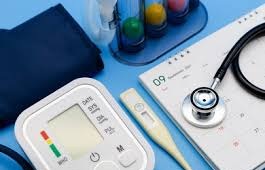The health check monitor can be used to measure and track QC1 parameters, such as the AQR, VLT/VLTI, and other relevant measurements. Its primary goal is not completeness, but rather the evaluation of critical instrument components. Health Check monitors display data in two views, with HC plots connected with a QC1 database. Moreover, the Health Check monitor is part of a comprehensive real-time QC system, which also includes the calChecker, AB product monitors, and QC1 parameters.
Multiple health detectors may include a height and weight meter 51, an ear thermometer, a blood oxygen instrument, an electrocardiograph, a body fat metre, a sphygmomanometer, a body fat meter, an infrared thermal imaging device, and an electrocardiograph. Each health detector has a communication interface, which is connected to the control module 3 via wired mode.
Quality rating instruments for healthcare websites emerged in the mid-1990s as a response to the rapid growth in the number of healthcare websites. These rating instruments were developed as part of a range of commercial and academic initiatives, including the use of logos that resembled seals of approval or awards. They were then embedded in websites. Many researchers and practitioners have since published their findings on the subject. The Personal Health Check study was implemented in four Dutch municipalities.
Various types of health checks are used to determine the overall health of a server. The health of a server goes beyond its hard drives and power supplies. The performance metrics used for server health vary between application servers, web servers, and email servers. Each implementation of health check instrument has its own unique set of performance metrics. Some physical checks include CPU usage, disk capacity, and memory availability. Other health checks are based on connectivity, dependency, and anomaly evaluation. These instruments are useful for establishing a baseline based on historical data.
One such instrument is the pulse oximeter, a non-invasive clip that measures the patient’s pulse and records their body temperature. During a regular health check, the pulse oximeter is particularly useful for diagnosing COVID-19 or lung disease, as it is an early sign of worsening symptoms. When using a pulse oximeter, doctors should monitor it regularly, even when the patient is not feeling well.
A tuning fork is used to evaluate the patient’s hearing. The prongs of the tuning fork are placed close to the patient’s skull and the patient describes the sound they hear. Depending on the results, the physician may order additional tests. Additional supplies include cotton balls and cotton-tipped applicators for minor punctures. They should be kept clean and disinfected to prevent infection. It is also vital to understand the use of the stethoscope as it is used to monitor many bodily functions.

